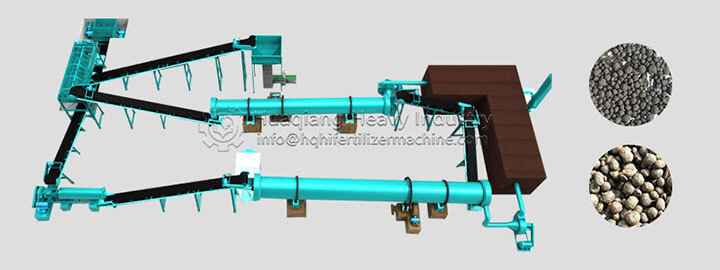In agricultural production, the terms "biofertilizer" and "organic fertilizer" are often mentioned, and many people mistakenly believe they are the same product. In fact, there are significant differences in their nature, mode of action, and production equipment. A proper distinction can help maximize their effectiveness.

From a core definition, organic fertilizer is a "nutrient provider." It's made from organic materials such as animal and plant residues, livestock and poultry manure, and straw, through composting and fermentation. Its core value lies in replenishing the soil with organic matter and essential nutrients such as nitrogen, phosphorus, and potassium, improving its physical structure. Common sheep manure and compost fall into this category. Its function is more of a "direct replenishment"—like a "food" for the soil, slowly releasing nutrients for crop absorption.
Biofertilizer, on the other hand, is a "soil activator." It's based on specific microorganisms, produced through artificial cultivation and fermentation, and contains a large number of active beneficial bacteria, such as nitrogen-fixing bacteria and phosphate and potassium-solubilizing bacteria. The key function of this type of fertilizer isn't to directly provide nutrients, but to activate soil potential through microbial activity. For example, nitrogen-fixing bacteria convert nitrogen in the air into nitrogen that crops can absorb, while phosphate- and potassium-solubilizing bacteria break down unusable phosphorus and potassium in the soil. They also inhibit the growth of harmful bacteria and improve the soil microecological environment. Rhizobium agents and compound microbial fertilizers fall under the category of biofertilizers.
The production equipment for these two types also differs significantly. Organic fertilizer production centers on composting and fermentation, and the equipment required focuses more on material handling and fermentation environment control. For example, a straw crusher breaks up large pieces of straw to facilitate composting. A compost turner regularly stirs the fermentation pile, regulating the temperature and oxygen content within the pile and accelerating decomposition. Finally, a screener machine removes impurities, resulting in a granular or powdered product. Overall equipment investment is low, and the process is relatively simple.
Biological fertilizer production, on the other hand, focuses on microbial cultivation, placing extremely high demands on the equipment's sealing and sterility. During production, sterile inoculation boxes are required to prevent contamination of microbial strains. Fermentation tanks require precise control of parameters such as temperature, pH, and dissolved oxygen to provide an optimal growth environment for beneficial bacteria. Low-temperature drying equipment is subsequently required to remove moisture while preserving bacterial activity. Microbial testing equipment is also installed to ensure that the number of effective bacteria in the finished product meets the required standards. The overall equipment is technologically advanced.
The effects of the two also differ. Organic fertilizers are suitable for long-term soil improvement and enhancing basic fertility. They are suitable for plots with poor soil and low organic matter content. They loosen the soil and enhance its ability to retain water and fertilizer. Biofertilizers are more suitable for addressing soil "lack of activity." For example, when crops are weak or disease is increasing, applying biofertilizers can regulate their microbial growth, helping crops absorb nutrients better and reducing reliance on chemical fertilizers.
Understanding the differences between the two and using them appropriately based on soil conditions and crop needs can achieve the dual goals of healthy soil and high crop yields, promoting sustainable agricultural development.